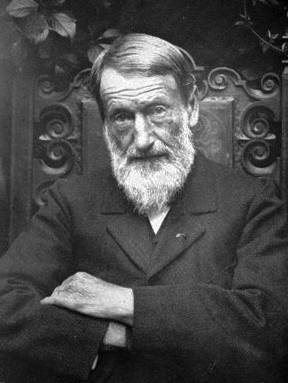Jacques-Gabriel Bulliot
Jacques-Gabriel Bulliot (1817–1902) was a pioneering French archaeologist who made significant contributions to the study of the Gauls and the Celtic civilization in Burgundy, France. His work is particularly noted for the excavation and study of the site at Bibracte, a major ancient Gaulish city located on Mont Beuvray in the Burgundy region.
Early Life and Education[edit | edit source]
Jacques-Gabriel Bulliot was born in 1817 in Autun, a city with rich historical significance dating back to the Roman Empire. From a young age, Bulliot showed a keen interest in history and archaeology, which was influenced by the rich cultural heritage of his hometown. Despite the lack of formal education in archaeology during his time, Bulliot pursued his interests through extensive reading and self-study.
Career[edit | edit source]
Bulliot's career in archaeology began in the mid-19th century, a period when the field was still in its infancy. His passion for the history of Burgundy, and particularly for the ancient Gaulish civilization, drove him to dedicate his life to uncovering the past. Bulliot is best known for his work at Bibracte, which he identified as the capital of the Aedui, a powerful Gaulish tribe. His identification of Bibracte was a significant achievement, as it was one of the first times a major Gaulish site had been accurately located and studied.
Throughout his career, Bulliot conducted extensive excavations at Bibracte, uncovering a wealth of information about Gaulish society, culture, and economy. His methods were meticulous for the time, and he placed a strong emphasis on the careful documentation of finds, which was not always standard practice in the early days of archaeology.
Contributions to Archaeology[edit | edit source]
Bulliot's contributions to archaeology extend beyond his excavations. He was a prolific writer, documenting his findings in numerous publications that have been invaluable resources for subsequent generations of archaeologists and historians. His work laid the foundation for the study of Celtic civilization in Burgundy and significantly advanced the understanding of Gaulish society.
One of Bulliot's major contributions was his emphasis on the importance of stratigraphy in archaeology, a principle that was not widely accepted or understood at the time. He recognized that the layers of earth in an excavation site could provide a chronological record of human activity, a concept that is fundamental to modern archaeological practice.
Legacy[edit | edit source]
Jacques-Gabriel Bulliot's legacy in the field of archaeology is profound. His pioneering work at Bibracte and his contributions to the methodology of archaeological research have earned him a place among the notable figures in the history of archaeology. The Museum of Celtic Civilization at Bibracte is a testament to his work, housing many of the artifacts he discovered and serving as a center for ongoing research into Gaulish and Celtic history.
Bulliot's dedication to uncovering the past has inspired generations of archaeologists, and his methodologies and discoveries continue to influence the field. His work exemplifies the importance of passion, perseverance, and meticulousness in the pursuit of knowledge about human history.
See Also[edit | edit source]
Search WikiMD
Ad.Tired of being Overweight? Try W8MD's physician weight loss program.
Semaglutide (Ozempic / Wegovy and Tirzepatide (Mounjaro / Zepbound) available.
Advertise on WikiMD
|
WikiMD's Wellness Encyclopedia |
| Let Food Be Thy Medicine Medicine Thy Food - Hippocrates |
Translate this page: - East Asian
中文,
日本,
한국어,
South Asian
हिन्दी,
தமிழ்,
తెలుగు,
Urdu,
ಕನ್ನಡ,
Southeast Asian
Indonesian,
Vietnamese,
Thai,
မြန်မာဘာသာ,
বাংলা
European
español,
Deutsch,
français,
Greek,
português do Brasil,
polski,
română,
русский,
Nederlands,
norsk,
svenska,
suomi,
Italian
Middle Eastern & African
عربى,
Turkish,
Persian,
Hebrew,
Afrikaans,
isiZulu,
Kiswahili,
Other
Bulgarian,
Hungarian,
Czech,
Swedish,
മലയാളം,
मराठी,
ਪੰਜਾਬੀ,
ગુજરાતી,
Portuguese,
Ukrainian
Medical Disclaimer: WikiMD is not a substitute for professional medical advice. The information on WikiMD is provided as an information resource only, may be incorrect, outdated or misleading, and is not to be used or relied on for any diagnostic or treatment purposes. Please consult your health care provider before making any healthcare decisions or for guidance about a specific medical condition. WikiMD expressly disclaims responsibility, and shall have no liability, for any damages, loss, injury, or liability whatsoever suffered as a result of your reliance on the information contained in this site. By visiting this site you agree to the foregoing terms and conditions, which may from time to time be changed or supplemented by WikiMD. If you do not agree to the foregoing terms and conditions, you should not enter or use this site. See full disclaimer.
Credits:Most images are courtesy of Wikimedia commons, and templates Wikipedia, licensed under CC BY SA or similar.
Contributors: Prab R. Tumpati, MD

